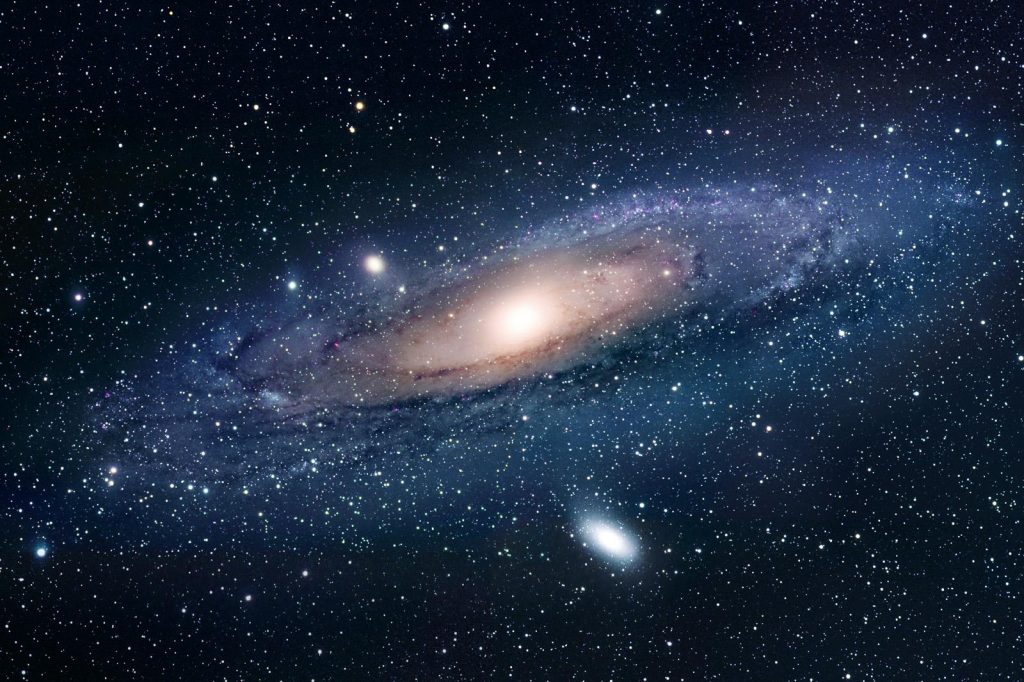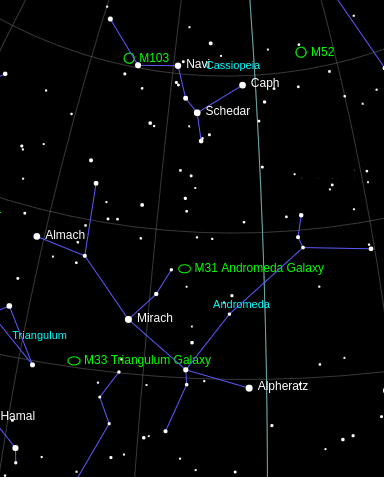The Andromeda Galaxy – M31 in the Messier Catalogue and NGC 224 in the New General Catalogue – is a barred spiral galaxy in the constellation of Andromeda.

The Andromeda galaxy is the largest member of our local group of galaxies and is around 765,000 parsecs (2.5 million light-years) from Earth. It is around 67,000 parsecs across and contains nearly one trillion stars.
Andromeda is know to have over 20 dwarf satellite galaxies, including M32 and M110, which are visible in the main image, above, to the left of Andromeda’s central bulge and to the bottom right, respectively.
As we are unable to view our own galaxy, the Milky Way, from the outside, M31 gives us some idea of how it might look to a distant observer, as both are barred spiral galaxies, although Andromeda is believed to contains nearly double the number of stars.
The Andromeda Galaxy is expected to merge with the Milky Way in about 4 billion year time. This should result in the two galaxies forming one large elliptical galaxy, or possibly a large disc galaxy.
The Persian astronomer Abd al-Rahman al-Sufi referred to the Andromeda Galaxy as a “nebulous smear” or “small cloud” in his Book of Fixed Stars written in 964 AD. It’s likely, however, that the galaxy had been observed since much more ancient times, as its apparent magnitude of around 3.44 makes it one of the most distant objects that can be seen with the naked eye.
Through a good small telescope the galactic disk can be distinguished from the brighter central bulge, and with a larger amateur telescope details such as globular clusters, dark dust lanes and the large star cloud NGC 206 in one of the spiral arms can be resolved.
Location of M31
The equatorial coordinates of M31, the Andromeda Galaxy are:
Right Ascension: 21h 40m 22.12
Declination: −23° 10′ 47.5″.
To find the Andromeda Galaxy, first locate the distinctive W-shaped asterism in the constellation of Cassiopeia.
The row of bright stars below the W, are part of the constellation of Andromeda. The first bright star from the left — as per the orientation shown in the star chart opposite — is Almach. The second bright star along is Mirach.
(Note that these lead towards Alpheratz, which is one of the corners of the Great Square of Pegasus. This can also be used to locate the constellation of Andromeda.)
Once you have located Mirach, the Andromeda Galaxy is just a few degrees back in the direction of Cassiopeia, near the end of a branch of two fainter stars that lead out from Mirach.
To find the Andromeda Galaxy’s current position in the sky from your location, visit our Night Sky Simulator.
